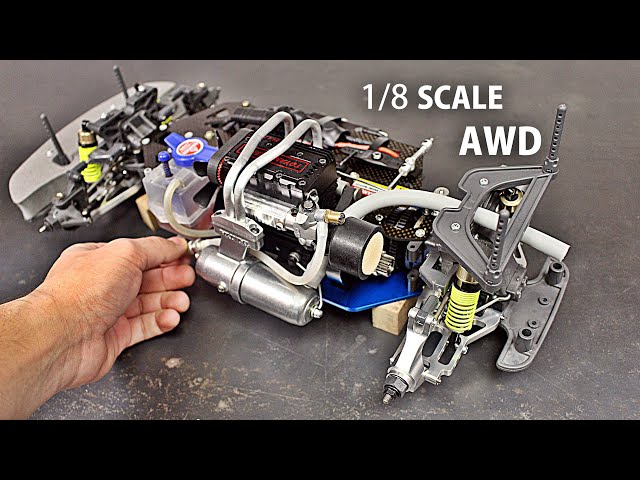So, you’re thinking about upgrading your RC car engine, huh? Maybe you’re tired of the constant tuning and finicky nature of two-stroke engines. Or perhaps you’re just looking for something with a bit more grunt and realism. Well, you’ve come to the right place! Let’s dive into the world of four-stroke RC car engines and explore what makes them tick, their advantages, and whether they’re the right choice for you. Get ready for a journey into miniature engineering marvels!
Understanding the Four-Stroke RC Car Engine Cycle
The four-stroke engine, just like its full-sized counterpart, operates on a four-step cycle. It’s a beautiful dance of precision and power, but what exactly are those steps?
The Four Strokes Explained
- Intake: The piston moves down, drawing a mixture of air and fuel into the cylinder. Think of it like the engine taking a big, deep breath.
- Compression: The piston moves up, compressing the air-fuel mixture. This makes it ready for ignition.
- Combustion: The spark plug ignites the compressed mixture, creating an explosion that forces the piston down. This is where the power happens!
- Exhaust: The piston moves up, pushing the burnt gases out of the cylinder through the exhaust valve. Time to clear the air for the next cycle!
Each of these strokes plays a crucial role in the engine’s operation. Understanding them is key to appreciating the complexity and efficiency of a four-stroke RC car engine.
Interesting Tip: Did you know that some four-stroke RC engines even have miniature valve trains, complete with camshafts and rockers, just like a real car engine? Talk about attention to detail!
Advantages of Using a Four-Stroke RC Car Engine
Why choose a four-stroke over a two-stroke? There are several compelling reasons. Let’s explore the benefits of making the switch.
Improved Fuel Efficiency
One of the biggest advantages is fuel efficiency. Four-stroke engines are generally much more economical than their two-stroke counterparts. This means longer run times and less money spent on fuel. Who doesn’t love saving a few bucks?
Smoother Power Delivery
Four-stroke engines tend to deliver power in a smoother, more linear fashion. This can make them easier to control, especially for beginners. No more jerky starts and unpredictable acceleration!
More Realistic Sound
Let’s be honest, the sound of a four-stroke engine is just plain cool. It has a deeper, more throaty rumble that sounds much more like a real car engine. It adds a whole new level of realism to your RC experience.
Considerations Before Switching to a Four-Stroke RC Car Engine
While four-stroke engines offer many advantages, there are also some things to consider before making the switch. It’s not always a simple plug-and-play upgrade.
Complexity and Maintenance
Four-stroke engines are generally more complex than two-strokes, which can mean more intricate maintenance. They often have more parts, including valves and camshafts, which require periodic adjustment and care. Are you ready to roll up your sleeves and get your hands dirty?
Cost
Four-stroke engines can be more expensive than two-strokes, both in terms of the initial purchase price and the cost of replacement parts. It’s important to factor this into your budget before making a decision.
Weight
In some cases, four-stroke engines can be heavier than two-strokes. This can affect the handling and performance of your RC car. Make sure your chassis can handle the extra weight.
Important Note: Always consult your RC car’s manual to ensure that a four-stroke engine is compatible. Some chassis may require modifications to accommodate the different engine size and mounting points.
Frequently Asked Questions About Four-Stroke RC Car Engines
So, there you have it – a comprehensive look at four-stroke RC car engines. They offer a unique blend of realism, efficiency, and smooth power delivery. While they may require a bit more maintenance and investment, the rewards can be well worth it for the right RC enthusiast. Ultimately, the decision of whether to switch to a four-stroke engine depends on your individual needs and preferences. Weigh the pros and cons, do your research, and choose the engine that’s right for you. Happy racing!






